
Journal of Language and Literacy Education
Scope & Guideline
Bridging Theory and Practice in Language and Literacy
Introduction
Aims and Scopes
- Multiliteracies and Pedagogy:
The journal explores multiliteracies as a pedagogical framework, aiming to understand how diverse literacies can be integrated into educational practices to support various learners. - Social Justice and Equity:
A consistent focus on social justice, the journal addresses issues of equity in literacy education, examining how race, culture, and identity influence teaching and learning. - Translingual and Multilingual Education:
The journal emphasizes the importance of translingual and multilingual approaches in literacy education, advocating for practices that recognize and leverage students' linguistic diversity. - Critical Literacy:
Through critical literacy perspectives, the journal encourages educators to challenge dominant narratives and engage students in discussions about power, identity, and representation. - Innovative Research Methodologies:
The journal promotes the use of innovative and integrative research methodologies, including qualitative, quantitative, and multimodal approaches, to provide comprehensive insights into literacy education.
Trending and Emerging
- Digital Literacies and Technology Integration:
There is an increasing focus on digital literacies, particularly how technology can enhance literacy education and engage students in new ways. - Literacies of Social Justice:
Emerging themes around social justice literacies are prominent, highlighting the role of education in addressing societal inequities and advocating for marginalized voices. - Identity and Intersectionality in Literacy:
The exploration of identity and intersectionality within literacy practices is gaining traction, emphasizing how personal and cultural identities shape literacy experiences. - Community and Culturally Sustaining Pedagogies:
There is a growing trend towards community-based and culturally sustaining pedagogies that recognize and value students' cultural backgrounds and lived experiences. - Interdisciplinary Approaches to Literacy Education:
An emerging trend is the incorporation of interdisciplinary approaches that connect literacy education with other fields, fostering comprehensive learning experiences.
Declining or Waning
- Traditional Literacy Approaches:
There appears to be a decreasing focus on traditional literacy methods, as the journal shifts towards more innovative, inclusive, and critical pedagogical frameworks. - Standardized Assessment Practices:
Discussions surrounding standardized assessment and its role in literacy education have diminished, reflecting a broader critique of such practices in favor of more holistic and formative assessment approaches. - Monolingual Education Models:
The journal has seen a reduction in articles advocating for monolingual literacy education, aligning with the growing recognition of the importance of multilingualism in contemporary classrooms. - Narrowly Defined Literacy Skills:
There is a waning interest in narrowly defined literacy skills in favor of broader, more integrative concepts of literacy that encompass social and emotional dimensions.
Similar Journals
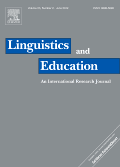
Linguistics and Education
Transforming Educational Practices Through Linguistic InsightsLinguistics and Education, published by Elsevier, is a premier journal dedicated to advancing the understanding of the intersections between linguistics and educational practices. With its ISSN 0898-5898 and E-ISSN 1873-1864, this journal has established itself as a significant platform since its inception in 1988, continuing to produce impactful research up to 2024. It enjoys a prestigious Q1 ranking in both the Education and Linguistics and Language categories, reflecting its high-quality contributions and leading role in the field. The journal’s Scopus rankings further underscore its influence, being placed in the 87th percentile for Arts and Humanities in Language and Linguistics, and the 86th percentile in Social Sciences in Linguistics and Language. Although it operates under traditional subscription access, its contributions are essential for researchers, professionals, and students alike, making substantial strides in the understanding of language, learning environments, and pedagogical strategies. The journal's objective is to foster interdisciplinary dialogue and disseminate innovative research that informs educational policy and practice.

Language and Literacy
Exploring the Nexus of Language Acquisition and Literacy DevelopmentLanguage and Literacy is an esteemed journal published by LANGUAGE & LITERACY RESEARCHERS CANADA, focusing on the vital intersections of language acquisition and literacy development. With a commitment to open access since 1999, this journal provides a platform for researchers and practitioners to share innovative findings and pedagogical insights that enhance the understanding of language and literacy in various educational contexts. The journal aims to foster a dialogue among educators, researchers, and policy makers by disseminating high-quality research and facilitating discussions on best practices. Recognized for its contributions to the field, Language and Literacy serves as an indispensable resource for those dedicated to improving literacy outcomes and language education globally. Based in Victoria, BC, Canada, it invites submissions that explore theoretical frameworks, empirical studies, and applied research, thereby enriching the academic community’s knowledge base.
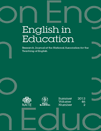
English in Education
Championing Scholarly Excellence in Language and LiteratureEnglish in Education, published by Taylor & Francis Ltd, is a premier journal dedicated to the broad field of education, with a specific focus on the interplay of language, literature, and pedagogy. Since its inception in 1964, this esteemed journal has become a vital resource for researchers, educators, and students alike, offering a platform for innovative research and scholarly discourse. With an impressive impact factor and categorized in the top quartiles of both Linguistics and Language, and Literature and Literary Theory, it ranks among the top journals in its field, denoting its significance and influence. The journal aims to advance understanding and practice in English education through rigorous peer-reviewed articles, theoretical explorations, and empirical studies that address contemporary challenges and developments in these intertwined disciplines. The journal’s commitment to excellence is reflected in its Scopus rankings, highlighting its critical role in fostering research that informs and enriches educational practices. Although currently not open access, English in Education remains an essential outlet for professionals seeking to contribute to the evolving landscape of English language and literature education.

READING RESEARCH QUARTERLY
Exploring the depths of reading comprehension.READING RESEARCH QUARTERLY is a premier academic journal dedicated to advancing the understanding of reading research within the domains of educational psychology and literacy development. Published by Wiley, this journal has been a vital resource for researchers, educators, and practitioners, featuring empirical studies, theoretical papers, and comprehensive reviews since its inception. With a remarkable impact factor and consistently ranked in the Q1 quartile for both Developmental and Educational Psychology and Education, it stands out as an authoritative source in the field. Notably, it possesses a strong international presence, evidenced by its Scopus rankings, sitting in the top 3% for educational social sciences and within the top 5% for developmental psychology. Although currently not offering Open Access, the journal ensures that its contributions are accessible through institutional subscriptions. By linking theoretical frameworks with practical applications, READING RESEARCH QUARTERLY serves as an essential platform for fostering innovation and collaboration among scholars and practitioners aiming to enhance literacy education and understanding.
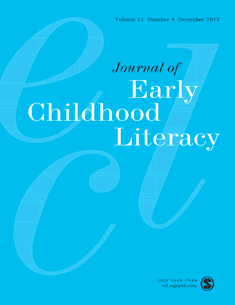
Journal of Early Childhood Literacy
Illuminating Pathways to Literacy SuccessJournal of Early Childhood Literacy, published by SAGE PUBLICATIONS LTD, is a leading international journal dedicated to the exploration and dissemination of research in the field of early childhood literacy. With a robust impact factor and a distinguished ranking in the Q1 category of Education, this journal is at the forefront of publishing innovative studies and theoretical frameworks that shape literacy practices and policies for young learners. Operating from its base in the United Kingdom, it serves as a crucial platform for researchers, educators, and practitioners alike, providing insights into literacy development, pedagogical strategies, and the socio-cultural contexts affecting literacy acquisition. Researchers can access a wealth of articles that reflect the journal’s commitment to advancing knowledge and understanding in early childhood literacy, making it an essential resource for anyone dedicated to fostering literacy in the formative years. The journal has consistently maintained a strong reputation, ranking in the top 82nd percentile among its peers in Social Sciences - Education according to Scopus metrics. Engage with the vibrant discourse and contribute to the evolving landscape of early literacy by exploring the latest findings published in the Journal of Early Childhood Literacy.
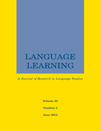
LANGUAGE LEARNING
Advancing the frontiers of language acquisition.LANGUAGE LEARNING is a premier academic journal dedicated to advancing the field of language acquisition and education, published by Wiley. With a foundation dating back to 1948, the journal has carved an esteemed niche in the academic landscape, currently holding a prestigious Q1 rank in both the categories of Education and Linguistics and Language. It proudly occupies the 9th percentile rank in the Arts and Humanities domain and the 10th percentile in Social Sciences, illustrating its influence and reach. The journal publishes high-quality research that explores various dimensions of language learning, from cognitive processes to pedagogical approaches, making it an essential resource for researchers, educators, and students alike. Although Access options are non-open, the journal remains accessible to a wide audience, reinforcing its commitment to disseminating critical insights within the academic community.

RESEARCH IN THE TEACHING OF ENGLISH
Exploring New Frontiers in Language EducationResearch in the Teaching of English is a premier academic journal published by the National Council of Teachers of English, dedicated to advancing the methodologies and practices in the field of English language education. With a robust ISSN of 0034-527X and e-ISSN of 1943-2348, the journal has carved a niche for itself by consistently presenting cutting-edge research that informs and enhances teaching efficacy in diverse educational contexts. Spanning publication periods from 1996 to 2001 and from 2004 to 2024, it serves as a pivotal resource for educators and researchers. Recognized for its impact, the journal currently holds a Q2 classification in Education and a Q1 in Linguistics and Language, reflecting its significance in academic discourse. With commendable Scopus rankings within the top percentiles in both Arts and Humanities and Social Sciences, it remains an essential platform for scholarly discussion aimed at improving English language teaching methodologies. Join a community of professionals devoted to enriching language education through innovative research contributions.

Turkish Journal of Education
Fostering Collaboration in Education ResearchTurkish Journal of Education, published by MEHMET TEKEREK, is a prominent Open Access journal dedicated to advancing the field of education research since its establishment in 2012. With an ISSN of 2147-2858, this journal exemplifies a commitment to disseminating high-quality research that addresses contemporary issues and innovative practices in education. It serves as a vital resource for researchers, educators, and policymakers interested in the educational landscape of Turkey and beyond. The journal promotes accessibility to knowledge by offering free access to its articles, fostering a collaborative and inclusive academic environment. By engaging with a diverse range of topics, from pedagogical theories to educational technology, the Turkish Journal of Education strives to contribute significantly to the field and stimulate scholarly debate among its readers.
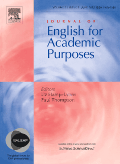
Journal of English for Academic Purposes
Advancing Research in Language and EducationJournal of English for Academic Purposes, published by ELSEVIER, is a premier peer-reviewed journal dedicated to the study and application of the English language within academic contexts. With an impressive impact factor indicative of its significance in the field, this journal is recognized in the Q1 category for both Education and Linguistics and Language, reflecting its high-quality contributions. It ranks 28th among 1088 in Arts and Humanities (Language and Linguistics) and is featured in the top percentile of Social Sciences. As an essential publication for researchers, educators, and language practitioners, it serves as a platform for innovative research that enhances academic English proficiency and teaching methodologies. With its commitment to exploring the intersection of language and education, the Journal of English for Academic Purposes is a vital resource for those aiming to advance their knowledge and practice in English language education. This journal has been actively contributing to the academic discourse since its inception in 2002 and continues to be influential in shaping the future of English language studies and pedagogy.

Language Teaching for Young Learners
Transforming language education for the next generation.Language Teaching for Young Learners, published by John Benjamins Publishing Co, is a premier journal dedicated to enhancing the pedagogy of language acquisition in early childhood education. Since its inception in 2019, it has rapidly established itself within the research community, reflected by its high Scopus rankings—placing it in the 85th percentile for Language and Linguistics and the 84th percentile for Education. The journal aims to provide a platform for innovative research, practical insights, and theoretical discussions surrounding the teaching of languages to young learners, thus contributing significantly to the fields of Education and Linguistics. With an open access model currently unavailable, it caters to a diverse global audience, including researchers, educators, and policy-makers, keen on improving pedagogical practices. Located in the Netherlands, the journal's commitment to academic excellence is evident through its Q1 and Q2 rankings in Linguistics and Language and Education respectively, encouraging continual discourse in cultivating effective language education practices.